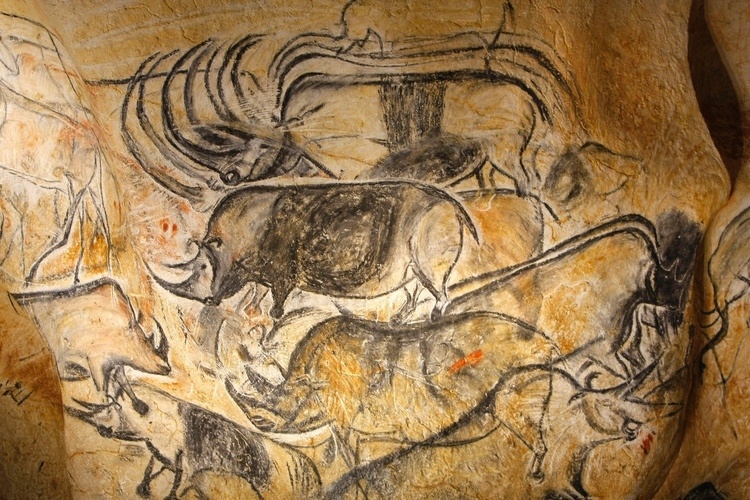How did it come to be a foregone conclusion that cave men spent their days clubbing one another and dragging women around by the hair? As GK Chesterton remarked, “I have never happened to come upon the evidence for this idea; and I do not know on what primitive diaries or prehistoric divorce-reports it is founded.”
In truth, cave men and women left precious little documentary evidence to show what they were doing in their caves. The documentary evidence they did leave, however, reveals that, whatever else early people might have been, they were definitely artists. They took ochre or charcoal in hand and made things like these:




Reflecting on the beautiful cave paintings of Lascaux, Chesterton writes,
They were drawings or paintings of animals; and they were drawn or painted not only by a man but by an artist. Under whatever archaic limitations, they showed that love of the long sweeping line or the long wavering line which any man who has ever drawn or tried to draw will recognize…They showed the experimental and adventurous spirit of the artist, the spirit that does not avoid but attempts difficult things; as where the draughtsman has represented the action of the stag when he swings his head clear round and noses toward his tail, an action familiar enough in the horse…In this and twenty other details it is clear that the artist had watched animals with a certain interest and presumably a certain pleasure. In that sense it would seem that he was not only an artist but a naturalist; the sort of naturalist who is really natural. (from The Everlasting Man)
For as long as there have been people, we have had the urge to represent the world around us, in pictures or words or music or with pipe cleaners, if that’s what we have on hand.
I mention these things because I keep running into people who fritter away psychic energy wondering if they are sufficiently creative or talented–energy that would be better spent writing or making music or making friends or cooking or painting or almost anything, really, rather than the kind of navel-gazing that curves us inward rather than outward toward a world that is well worth our attention.
Creativity isn’t the special province of a chosen few. There is no creative class. True, you can lose touch with your creativity–people do it all the time–but creativity is your birthright.
I’ll have more to say on this topic next week. Meanwhile, I am happy to report that after a couple of years’ hiatus, The Molehill, the literary annual of the Rabbit Room, is back. Volume 5 releases July 9. Here’s an overview by Pete Peterson, the editor (you can also pre-order from a link on that page). I think you’re going to like this volume.







